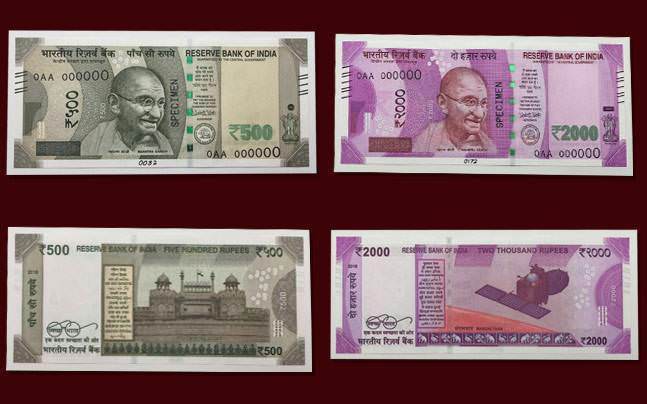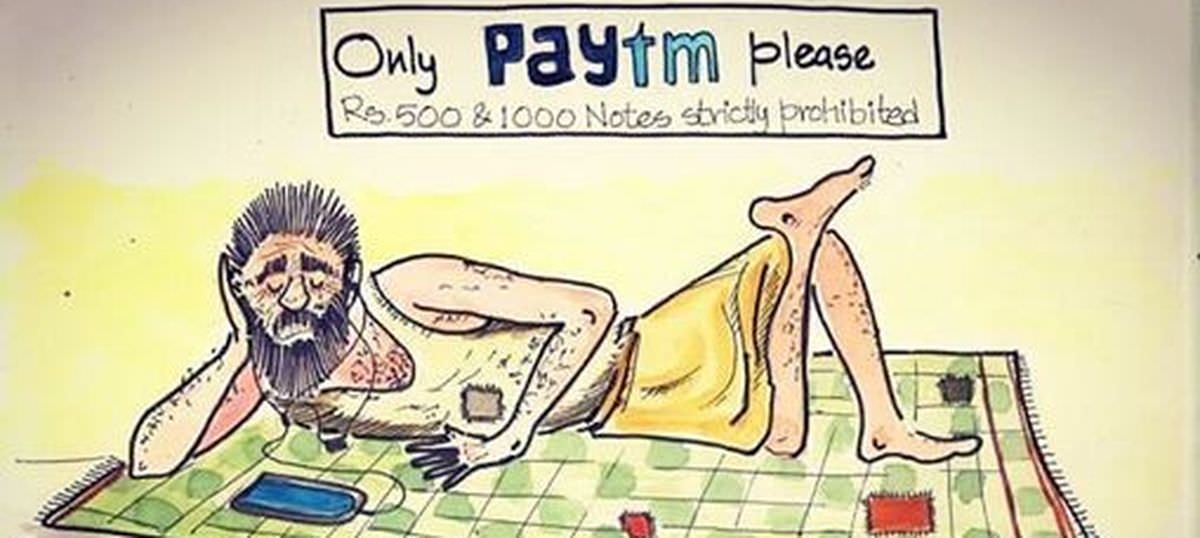A petition started by Blind Graduates Forum which is being widely circulated in the social media presently starts by saying –
“How would you feel if you unknowingly give away Rs 500 note to the auto person instead of Rs 20 note and realize after he drives away? How would you live if in every monetary transaction, there is no way for you to identify the notes, coins and total amount? How would you feel if every time you want to spend or get cash you have to rely on another person to know the amount?”
For a large number of people, this seems like an imaginary scenario as we cannot even think of handing over Rs 500 note to an auto driver when the fare is only Rs 20. But this is a day to day reality of lakhs of people in India who are visually impaired. Many of us, who do not have any visual disabilities, are also often complaining that after demonetisation, sizes of notes are identical and it is difficult to distinguish one the new notes as all the new notes are of same size.

Image Credit: India Today
It is natural that those who are totally blind or are having low vision, will find it impossible to differentiate one note from the other. It is important to remember here digital currency remains mostly inaccessible to this group of people as websites of several Banks, ATMs do not have comply with Website Content Accessibility Guidelines.
As a result, blind people, even those who are highly educated and earning, remain dependent on others about financial matters. So when general citizens of India are fighting legal cases against the government over “Privacy” issues, privacy for some sections of our population becomes a joke as s/he will have to depend on some other person for every single monetary transaction.
One feels interested in knowing whether the situation is different in other countries. NPR tells us that, “In Europe, the euro’s paper currency features large, raised numerals and foil elements, and longer notes connote higher value. In Japan, new designs for the yen incorporate tactile elements. In England, the size of pound notes correspond to their value – 5, 10, 20 and 50; the 20-pound note issued last year has large numerals and raised text on the front”.
A series of Canadian bank notes, issued in 2001, has four design features catering to a range of users, including the blind and senior citizens.
Five distinct colours help the visually impaired distinguish Canadian bills from one another. Large numerals are presented in high contrast: One side of the bill has a dark number on a light background; the other side has a light number on a dark background. The bills also have a tactile feature: raised dots in the upper right corner that correspond to specific dollar amounts.
We also came to know that blind community in US is still very unhappy with their currency. The American Council of the Blind filed a court case in the year 2002. However currency with tactile marks are still not a reality.
A tweet from World Blind Union dated 21st September 2017 says:
Today’s the day: Jane Austen ten pound notes are Out There. And I have reason to believe that she & me might be on @BBCTheOneShow tonight. pic.twitter.com/wTIl8C3A8S
— Lucy Worsley (@Lucy_Worsley) September 14, 2017
“The Bank of England’s new £10 note, for example, is designed to be easily recognizable by touch. The new note, which features Jane Austen (the only non-Queen female on British money these days), features a series of raised dots in its upper-left corner and fine raised lines on its sides. These features, coupled with a new material—smooth, durable plastic polymer—should make it easily identifiable.”
Blind community of India is however very hopeful as their campaign about Accessible Currency is gaining grounds. More than 4000 people signed a petition that Blind Graduates Forum of India started and intends to submit to the Finance Minister of India, Governor of Reserve Bank of India along with few others. Apart from that, they have started a Facebook page as well as using twitter to make this issue visible to larger section of people.
India passed Rights of Persons with Disabilities Act in 2016 and is legally bound not to discriminate against its disabled citizens. The Act in its beginning invokes United Nations Convention of Rights of Persons with Disabilities (UNCRPD) & promises that this Act is based on the following principles of UNCRPD:
(a) respect for inherent dignity, individual autonomy including the freedom to make one’s own choices, and independence of persons;
(b) non-discrimination;
(c) full and effective participation and inclusion in society;
(d) respect for difference and acceptance of persons with disabilities as part of human diversity and humanity;
(e) equality of opportunity;
(f) accessibility;
However, as far as financial services are concerned, it is visible that Indian Government is not fulfilling its obligation towards persons with full or partial visual impairments as neither currency notes nor are banking facilities are accessible. This form of discrimination is affecting their inclusion in society. In spite of that, we are hopeful that the Government of India will respond positively towards this Accessible Currency Campaign.
On this World Sight Day, (World Sight Day is the day of awareness held on the second Thursday of October, to focus attention on blindness and vision impairment. World Sight Day 2017 is on 12 October 2017) let us all join this campaign and make financial independence a reality for the Indian blind community.
Also Read: #WhyTaxDisability: GST Increases Tax On Disability Aids And Appliances
Featured Image Credit: Scroll




